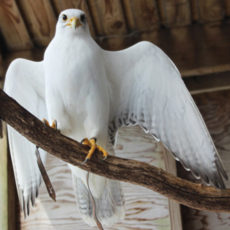Announcements

An integrated program of counseling, psychotherapy, and animal-assisted/nature-based activities supports the individual needs of each and every resident. Family work is also an integral part of a child’s success, and families are supported in the growth and development of their relationship with the child.
Each child in the Residential Treatment Center is assigned an individual psychiatrist who becomes a vital member of that child’s treatment team. The primary functions of the psychiatrist are to monitor and regulate a child’s psychotropic medications and to educate staff and families regarding the types of medications, target symptoms and any possible side effects. The goal of youth mental health treatment is to stabilize a child’s mood and behavior, enabling them to benefit from academic instruction. Our psychiatrists look to reduce medication use whenever possible, particularly as a child prepares for discharge.
Upon admission, each child is assigned a therapist, who may be a licensed Social Worker, Mental Health Counselor, Psychologist, or Graduate- or Ph.D.-level Intern. Therapists meet with each child for weekly individual counseling and psychotherapy sessions and also work with direct care staff in weekly living unit group sessions. Specialized small groups in areas such as soft skills, grief & loss, sensory integration, sex education, and children who are freed for adoption also may be offered.
Sessions are individualized to each child using a number of different therapeutic modalities, including, but not limited to, Dialectical Behavior Therapy, Cognitive Behavior Therapy, animal-assisted therapy and play therapy. All therapists practice within a family systems and trauma-informed framework. In addition, therapists may coordinate classroom psycho-education groups on social skills and other topics.
An enriched treatment milieu that brings people together with animals and plants in a mutually beneficial relationship lays at the foundation of the Green Chimneys approach. Nature-based programs at Green Chimneys support the school and residences, as well as clinical approaches and the overall therapeutic process. Our entire team of farm and clinical staff is part of the treatment process, and the nature-based activities provided each day are a cornerstone of a child’s experience with us.
Animal Assisted Therapy (AAT) can be applied with an individual child, families and groups in many different forms, from working with animals at the farm and horse barn to the use of employees’ personal dogs. AAT helps improve trust, communication, confidence, boundaries, impulse control, management of emotions, focus and attention, relationship-building, empathy, mastery and self-control. Clinical benefits of Animal-Assisted Activities/Therapy
All animal activities are conducted by a licensed and/or credentialed health provider such as an occupational therapist, physical therapist, social worker, or mental health professional. Animals are handled by the professional who have incorporated animals as part of their specialty or by another staff member under their supervision.
Family work is an integral part of a child’s success at Green Chimneys. Therapists arrange family sessions twice monthly, offering daytime, evening, and some weekend hours. Family sessions are conducted with you and your child(ren) in order to work on family-specific treatment goals including strengthening relationships, improving interactions and communication, and promoting consistency between caregivers. Therapists are also available to speak with you weekly, and as needed, to keep you informed of progress at school, give you information about your child’s special needs, and help you manage behaviors at home.
Parents and guardians can access additional resources and support through monthly psycho-education groups and trainings. Additional education and support opportunities include monthly parent training opportunities, an annual parent retreat, and networking with the Green Chimneys Parent Association (GCPA).
Monthly sibling groups are offered on campus during Parent Training Sundays at the same time as parent groups. Sibling groups can range from psycho-education activities to animal activities, process groups, and support groups covering a variety of topics. All siblings, ages 6 and up, of residents are welcome.
Our social workers, therapists, and transition coordinators are available to help you navigate and access the often confusing systems of care – Office of People With Developmental Disabilities; Office of Mental Health; ACCESS-VR; Medicaid; Supplemental Security Income – as well as assist with referrals for various supportive services in your communities, such as individual and family therapy, case management, psychiatric services, and similar supports. Learn more about Transition Planning and Community Resources

Crowned the best for falconry in medieval times, gyrfalcons were once reserved for kings. As the largest falcon in the world, with exquisite plumage ranging from bright white to deep charcoal, gyrs are revered for their powerful skill of flight. Their long wings make hunting waterfowl from 3,000-feet-high a feasible and fantastical feat. This falcon was flown in the sport of falconry for several years.